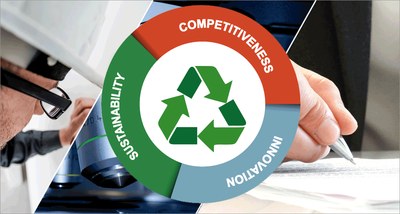Environment: ENEA, four-step action Plan for Italian model of circular economy
15/12/2016
Presented at the event success cases of Barilla, Costa Crociere, Enel and Gruppo Intesa San Paolo.
 An action Plan in four steps to favour the transition to a circular economy, a new development model of our Country unleashing innovation and improving competitiveness and sustainability.
An action Plan in four steps to favour the transition to a circular economy, a new development model of our Country unleashing innovation and improving competitiveness and sustainability.
It was presented by The President of ENEA Federico Testa during the Conference “Innovation and competitiveness: the Italian way to a circular economy”, which brought together representatives of institutions such as the Presidency of the Council, the Ministries of the Environment and the Economic Development, of associations such as Confindustria, ABI and Legambiente and of major companies such as Barilla, Costa Crociere, Enel and Gruppo Intesa San Paolo.
The Plan originated as a programmatic contribution to the creation of an Italian made circular economy through a four-step path:
- creation of a National Agency for an efficient use of resources, following the examples of Germany, Japan and the USA;
- regulatory simplification with a focus on waste prevention and recycling;
- synergy among PA, research and enterprises;
- transfer of technologies for the innovation of the national productive system.
“Our Country is ready for the transition to a circular economy which would ensure a sustainable economic growth and new green jobs“, Federico Testa, President of ENEA, pointed out. “Hence our proposal of a programmatic manifesto of a circular economy, taking the form of an action plan for the creation of a National Agency for an efficient use of resources. By virtue of its impartial role – Testa added- ENEA could act as such an Agency, ensuring the necessary coordination, to the advantage of enterprises and Public Administration”.
“Institutions, research bodies and enterprises – Roberto Morabito, Head of the ENEA Department Sustainability of Productive and Territorial Systems, remarked- are already active in this area with numerous initiatives that too often remain isolated. It’s therefore necessary to find suitable technological solutions for closing the productive cycles; streamlining the regulatory framework with a focus on the end-of-waste legislation and the REACH regulation on the end-of-waste status; increasing cooperation among enterprises, research and Public Administration; boost innovation within the production system.
“At ENEA – Morabito went on – we’ve long been working at developing and implementing technological solutions and integrated approaches for an efficient use of resources, both on the territory and within enterprises. We’ve created the first industrial symbiosis platform in Italy and completed projects in this field in three Italian regions, supporting enterprises operating in different sectors to exchange resources that, from potential waste in a productive cycle, become useful elements in another”.
In Italy alone, a circular economy development model could generate over 500 thousand jobs, with significant beneficial effects on the environment and the productive system. Globally, the European Commission has estimated eco-planning and waste reduction and reuse will generate annual savings of 600 billion euro for enterprises (8% of the annual turnover) and reduction of GHG emissions of 450 million tons/year.
